Ebb and Flow by Joshua Snow
Capturing E-motion
Capturing motion is one thing, but capturing emotion is quite another. In this article I’ll walk you through a few tips on how I do my very best to make every image feel like you’re standing right beside me!
The past couple of weeks I’ve been on the Oregon coast with a few more to go. The weather constantly is a complete crap shoot, but no matter what the weather, there is ALWAYS something to capture. Its massive volcanic sea stacks, boulder littered beaches, and big surf make it the perfect place to work on seascape photography – a genre I love but don’t frequently get to shoot.
On my last visit to Oregon, I primarily focused on images over-looking the beaches (vista-like scenes showing how grandiose some areas are) but on this trip all my focus is on capturing waves up close and personal. Nothing transports a viewer into the scene quite like having a wave crashing right at you. The idea is to capture motion; finding a balance between a fast-enough shutter speed to pause the waves and keeping it short enough to soften and blur them. Here are a few tips on how to find pleasing compositions, capture motion, and transport your viewer!
Finding Composition
Every beach has waves, no matter where you find yourself in the world, but finding compositions isn’t always easy. In coastal locations, I home in on areas with lots of rocks, boulders, or anything organic that might cause disruption to waves. Something to make them crash, spread, spray, and flow. Once I have found those elements I look for gatherings of those things that create some sort of order, some symmetry, and something that creates depth and leading lines – which are sometimes not obvious at first.
Here’s an example: a no-name beach, with just ordinary rocks. However, the way the rocks grew the further they parted from the shore, the way they framed the waves, and the way the waves splashed around, are what drew me to this scene.
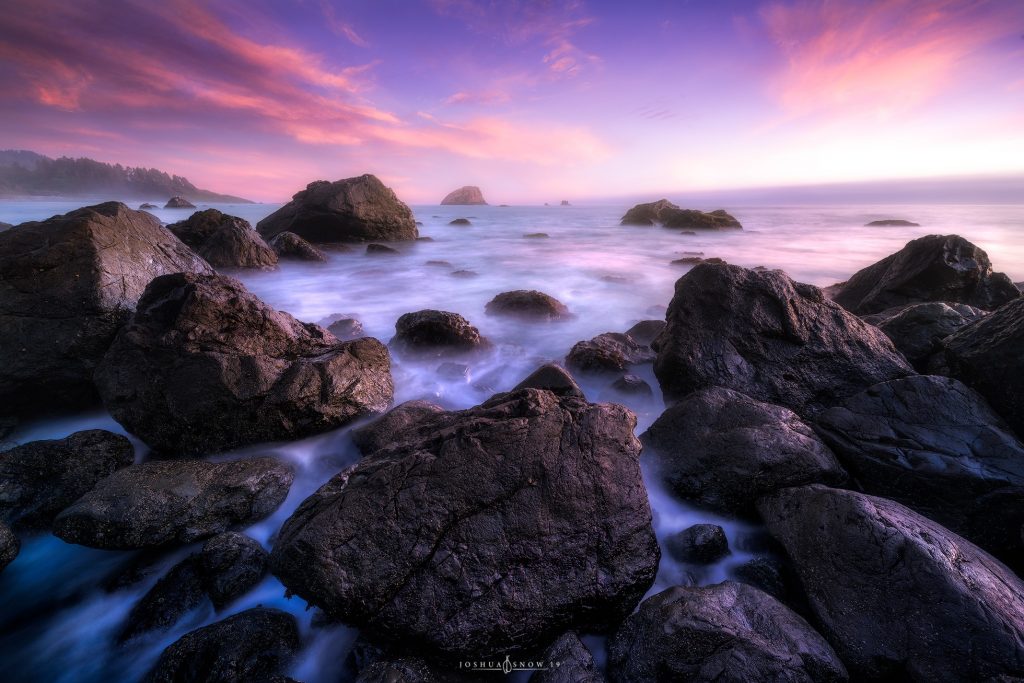
Capturing Motion
When photographing landscapes, we usually focus on the scene, and less on shutter speed creatively. Although it requires an extra thought, pausing and thinking about your shutter speed can improve the image or even help the composition! Studying the waves – the way they crash and move – gives you a big leg up in that direction. Using a shutter speed that both softens the detail but is fast enough to capture their motion might be the strongest asset to the image. In a lot of cases I find that shutter speeds between 1/3rd and 1 second do the trick. However, big waves crash harder and little waves are slower, so this can vary considerably depending on the situation.
In the example above I chose to blend a couple of frames at different shutter speeds: 10 seconds, and 1 second to convey the sense of motion throughout the entire scene. I watched as the water in front of me flowed around the rocks, filing in the dark voids in the bottom corners. The waves swirling around in the bay beyond them, churning up and creating a foggy mist.
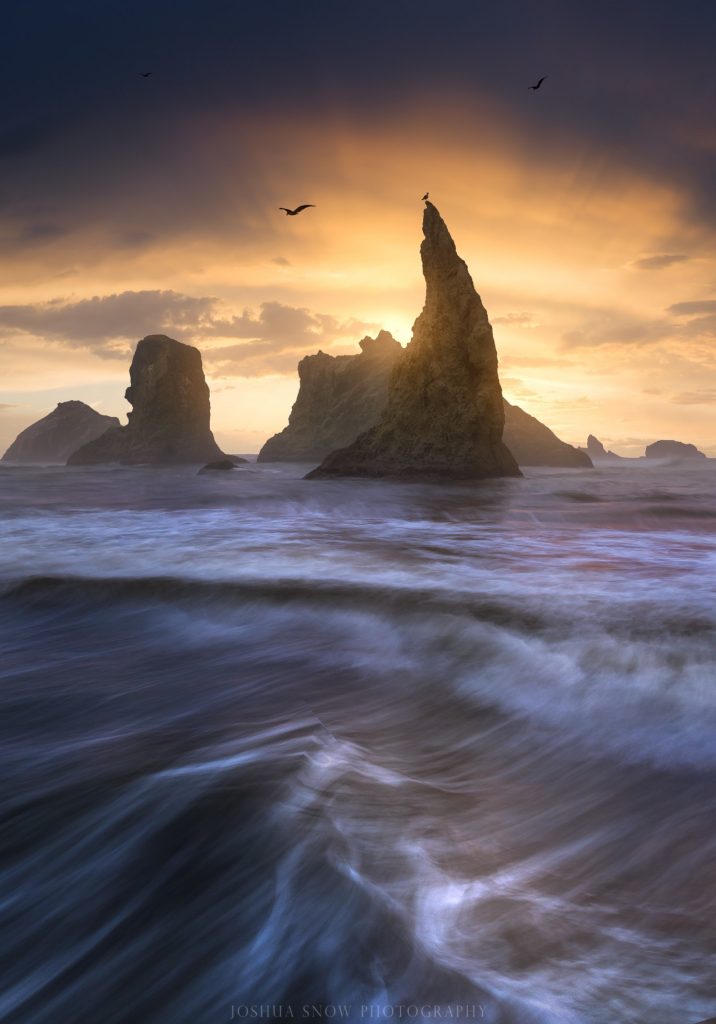
Transporting Your Viewer
Nothing conveys a sense of “place” like capturing a wave near the surface of the water – getting the shot just before that wave drenches your camera and tripod. Images like this will make the viewer feel as though they themselves captured it, and that sort of emotion is what it’s all about. Get low, get close, and carry LOTS and LOTS of lens cloths. Also consider a rain cover when doing so to keep your gear dry and corrosion free (salt water wreaks havoc on the exposed metal hardware).
In this example I was kneeling in the sand with chest waders on. The surf was constantly lapping my knees, but you never know when a big wave is going to try and take you out with an incoming tide. I was busy focusing on the lines created by receding waves that draw your eye toward the beautiful sea stacks when a rogue wave came right for me! I was caught off guard and now stuck in the sand with nowhere to go. All I could do was quickly grab my TVC-24L and raise it high over my head to keep the camera safe. None of the other shots up until that point gave me quite that sense of “place” like this one!
Here are a few other examples of images using the techniques above!
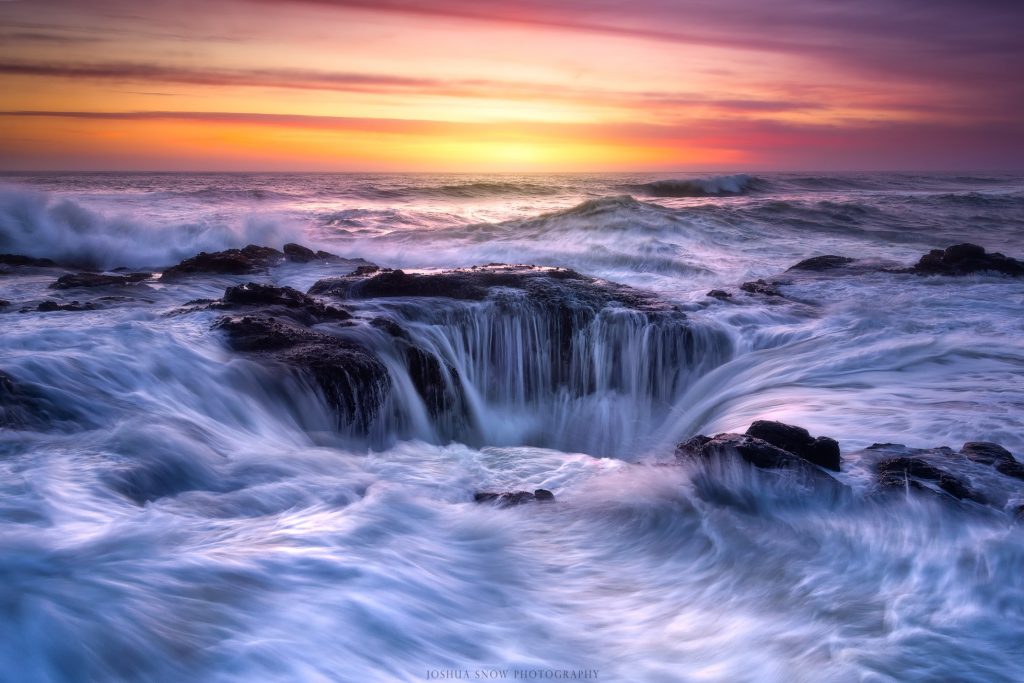
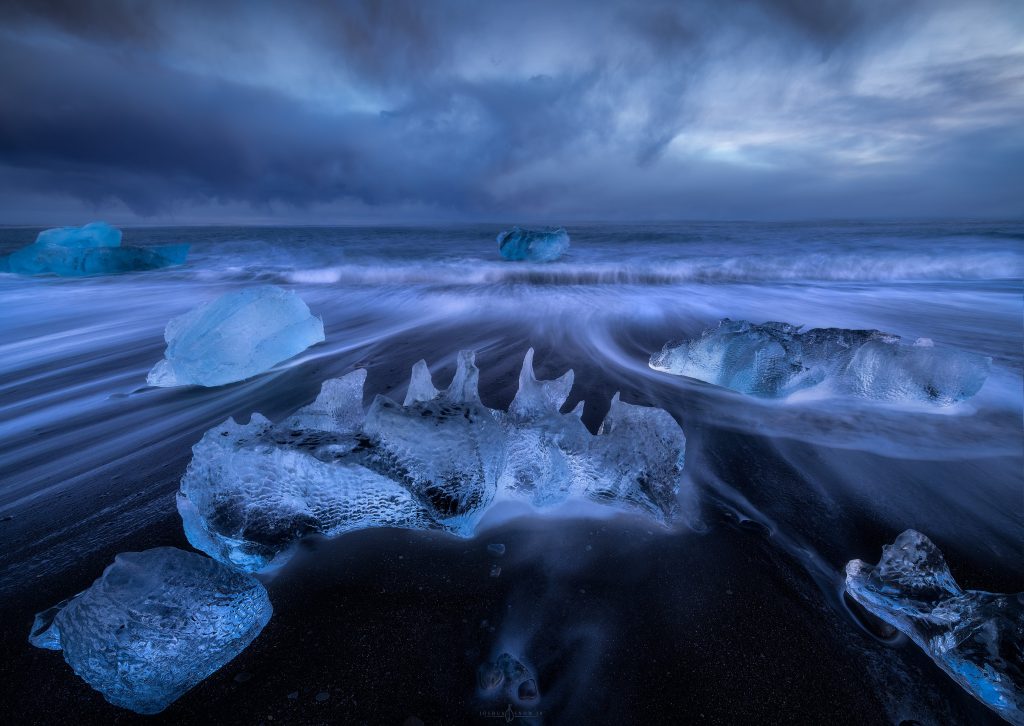
About Joshua Snow
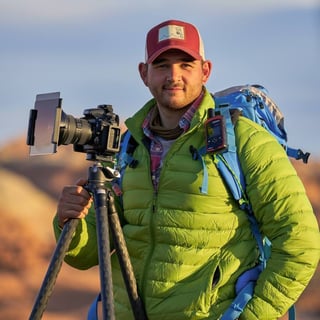
Joshua Snow is a full time fine art landscape and night photographer, photography educator, writer, and former mechanical engineer.
Joshua leads photography workshops full time all over the southwest and in Moab, Utah. His passions are creating art, traveling, and teaching. He specializes in advanced capture and processing techniques that can help elevate a photo to a work of art.
“I never leave home without my TVC-24L & BH-40, the perfect tripod and head for everything! This tripod has crossed the seas, been sand blasted, drowned in the surf, rappelled into canyons, forged rivers, and climbed mountains. “
Joshua Snow at Joshua Snow Photography and Creative Imagery
www.jsnowphotography.com
www.facebook.com/jsnowphotography
www.instagram.com/j.snow_photo
